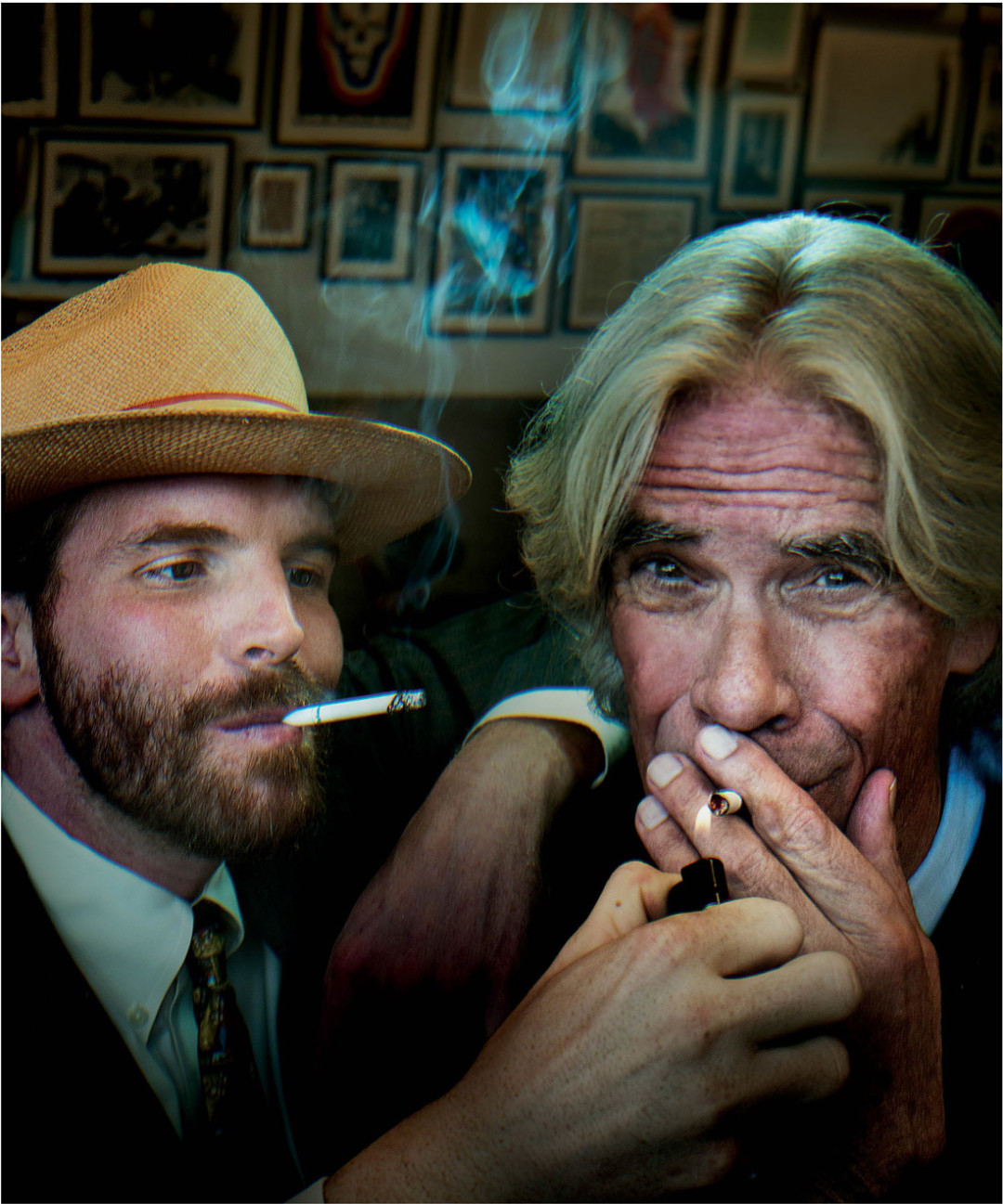Hunter’s Gatherers

Image: Karl Wolfgang
This past summer, Daniel Joseph (DJ) Watkins opened the pop-up Gonzo Gallery on East Hyman Avenue and released his new book, Freak Power, about Hunter S. Thompson’s celebrated run for sheriff of Pitkin County in 1970. Watkins has been aided by friend and legendary former local sheriff Bob Braudis, who wrote the foreword and afterword for the book and helped get the gallery open.
Aspen Sojourner: Why a book on Freak Power?
DJ Watkins: While I was writing my first book, Tom Benton: Artist/Activist, I kept coming across original material from Hunter’s campaign: broadsides, articles, photos. After a while, I gathered enough that I thought it merited its own book on an overlooked part of Hunter’s life, and I spent about two-and-a-half years putting it all together.
A.S.: The Freak Power exhibit is full of remarkable things—handbills with Hunter’s platform, mailers comparing him to Hitler, pornographic Aspen wallposters—many never seen before.
Bob Braudis: A lot of millennials are reading Hunter’s writings, and a lot of them had no idea that he ran for sheriff. They’re fascinated by the whole concept. The people that DJ and I met after publication of the book are very interested in how Hunter and the rest of us used Freak Power in 1970 as a lever. As I’ve said, while we worked hard, we lost, and then we went skiing. But a lot of us went skiing and then stayed involved in local politics.
D.J.W.: One of the things I wanted with the book was to make it sort of a road map for engagement. Look at how Hunter and his cohorts got involved on the local political scene as an example of getting people more involved. People that care about your community can make a change, because although Hunter didn’t win, later on elected officials carried out a lot of Hunter’s original ideas.
B.B.: You know, Jay, how progressive this valley became—on land-use issues, law enforcement, environmental issues, and downzoning the county to slow development.
A.S.: DJ, how did you move to Aspen and get interested in all of this?
D.J.W.: I came to Aspen on a ski vacation and had a chance meeting with Larry Lefner at the Woody Creek Art Studio. I was admiring Tom Benton’s work and in short order met Marcie Benton and then George Stranahan. And George is the one who really brought me here to the valley. I came to work for him to find and photograph all of Benton’s work. And that led me down the road to meeting all of these colorful characters who were friends and associates of Benton. It was sort of a backstage pass working for George. And that was about six, seven years ago.
A.S.: How did you land the primo space next to the Aspen Art Museum for the new gallery?
D.J.W.: I had the first Gonzo Gallery in the old Tom Benton building [on East Hyman, next to Little Annie’s] from February 2012 to April 2013, then took time off to do the book. I approached Andy and Nikos Hecht, the owners of my previous location, about this space, and they were very generous. Andy was really receptive and understands and appreciates Aspen history—he agreed that the gallery could add some vitality to this part of town. And they did it for what is really just a nominal fee, through April 2016.
This summer, of all the galleries in Aspen, I think the Gonzo Gallery had more energy and more brilliance and more interest than any.
A.S.: The new gallery seems to me a little like Benton’s original gallery, a kind of gathering spot.
D.J.W.: One of the nice things about the new space is it has become sort of a community meeting space for people. So we’re going to make the most use out of the space for the time we have. Keep the art active, keep the exhibits engaging, keep the Liberty Salon talks going to keep it a vibrant part of the community. We’ve had six of those so far—you can see them on GrassrootsTV.org and find links on the website I built, FreakPower.com. Matt Moseley will be in to talk about rivers and conservation, for one, and we’ll be hosting Juan Thompson [Hunter’s son] for a talk and signing of his new book. Plus shows from Ralph Steadman, Larry Lefner, Paul Pascarella, and others.
B.B.: This summer, of all the galleries in Aspen, I think the Gonzo Gallery had more energy and more brilliance and more interest than any.













































